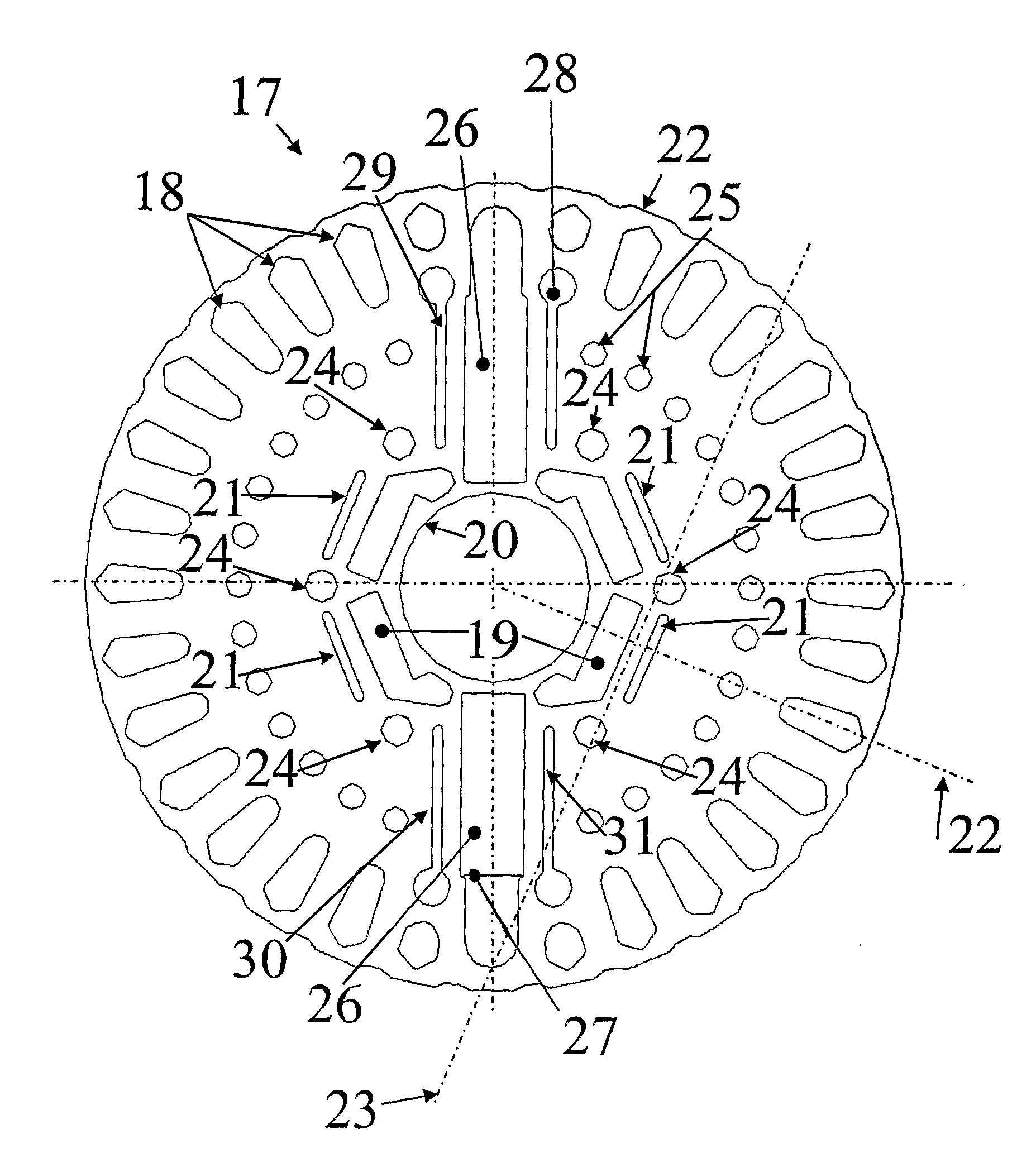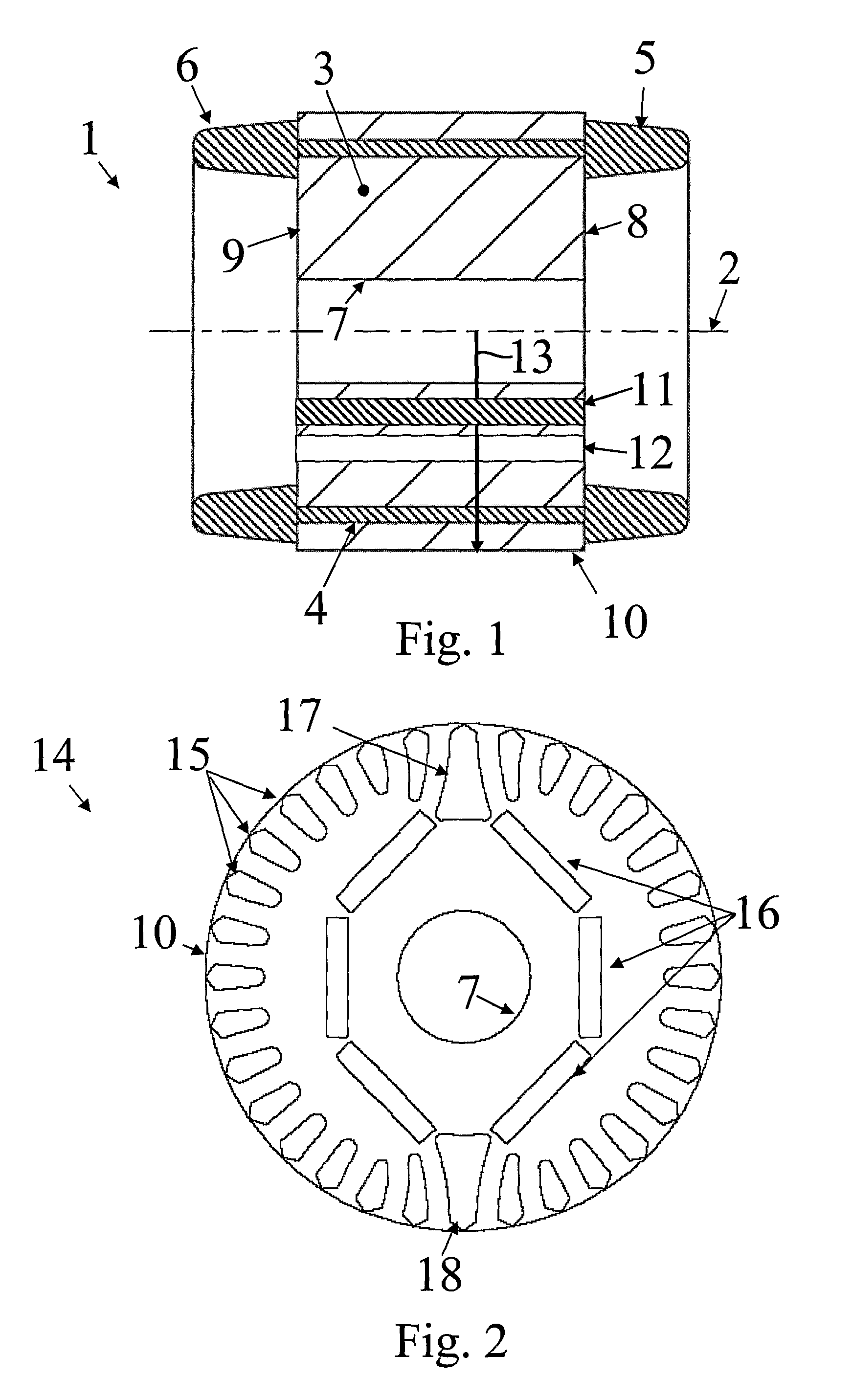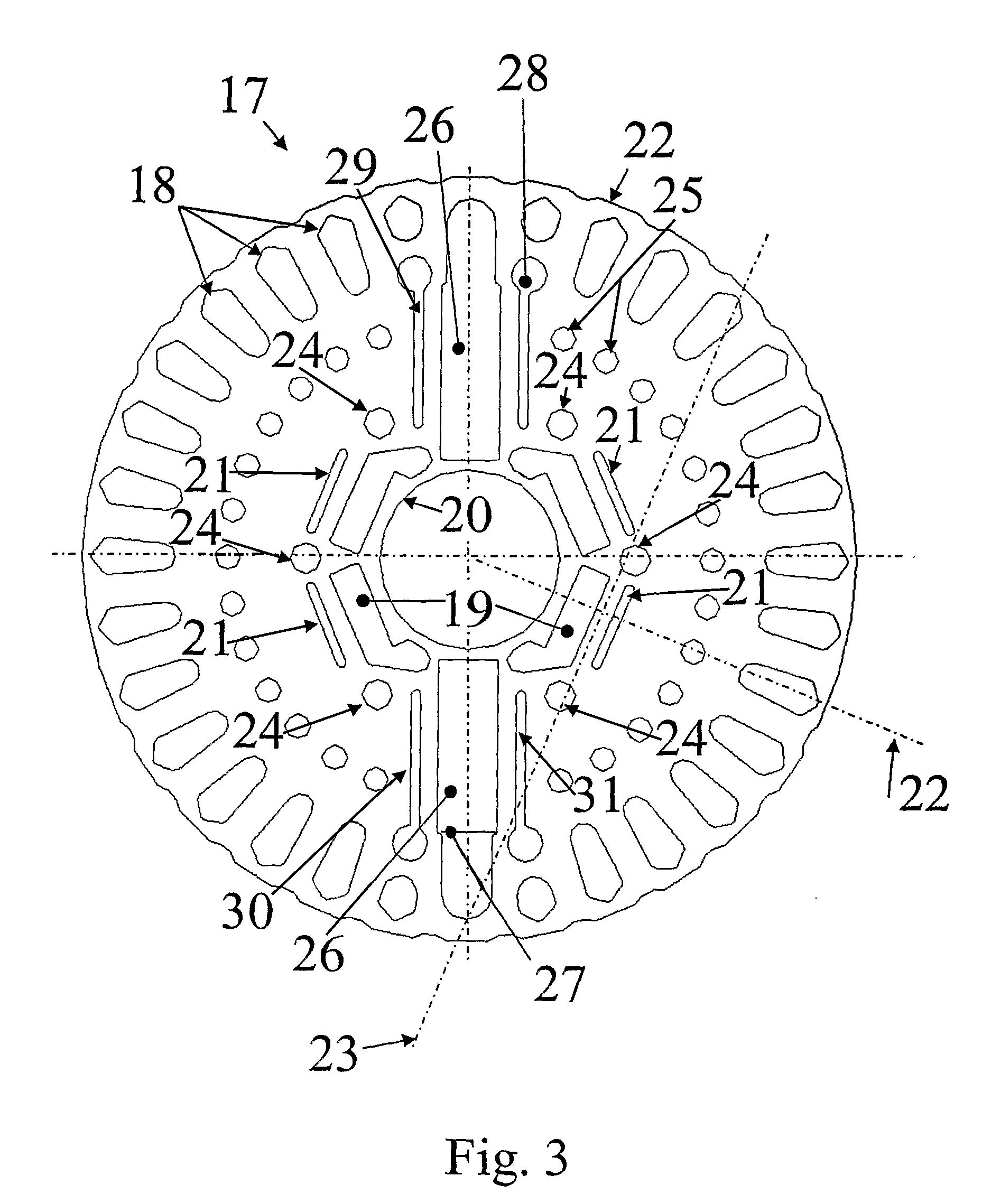Rotor with a thermal barrier and a motor with such a rotor
a thermal barrier and rotor technology, applied in the direction of dynamo-electric machines, electrical apparatus, magnetic circuits, etc., can solve the problems of high price of more heat resistant magnets and inappropriate start-up characteristics of synchronous motors, and achieve the effect of improving the magnetic field of the magnet, facilitating the creation of air stream through the rotor, and improving the cooling of the magnets
- Summary
- Abstract
- Description
- Claims
- Application Information
AI Technical Summary
Benefits of technology
Problems solved by technology
Method used
Image
Examples
Embodiment Construction
[0033]FIG. 1 illustrates a cross-section of a squirrel cage rotor 1 which is adapted for rotation around a centre axis 2. The rotor 1 comprises a core 3 made from magnetically conductive metal plates which are shown in FIG. 2. The plates are stacked and joined to form the core 3. The core comprises a squirrel cage winding 4 comprising a plurality of conductive bars which extend axially between short circuit rings 5, 6. The rotor comprises an internal bearing surface 7 in which a crank shaft (not shown) is inserted. The end faces 8, 9 of the rotor may form openings into ventilation gaps and may further form openings into cavities in which the magnets are located. The end faces may further form openings into the thermal barriers. The peripheral rim 10 is circular in a cross-section perpendicular to the centre axis 2. The rotor comprises plurality of circumferentially space magnets 11 and corresponding thermal barriers 12. Only one magnet and one thermal barrier is visible in the cross...
PUM
 Login to View More
Login to View More Abstract
Description
Claims
Application Information
 Login to View More
Login to View More - R&D
- Intellectual Property
- Life Sciences
- Materials
- Tech Scout
- Unparalleled Data Quality
- Higher Quality Content
- 60% Fewer Hallucinations
Browse by: Latest US Patents, China's latest patents, Technical Efficacy Thesaurus, Application Domain, Technology Topic, Popular Technical Reports.
© 2025 PatSnap. All rights reserved.Legal|Privacy policy|Modern Slavery Act Transparency Statement|Sitemap|About US| Contact US: help@patsnap.com



